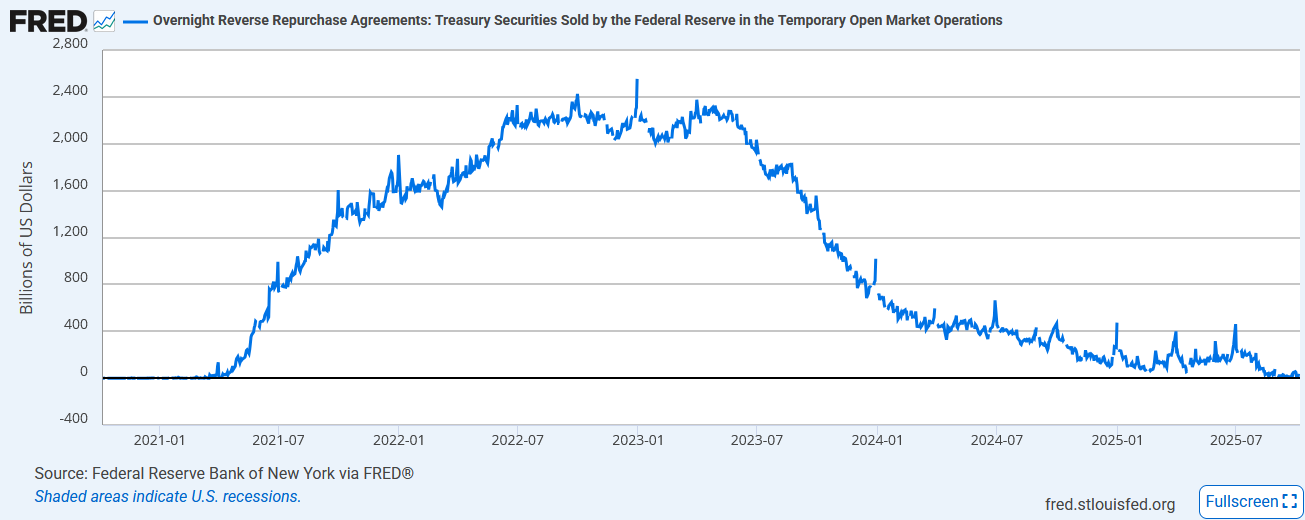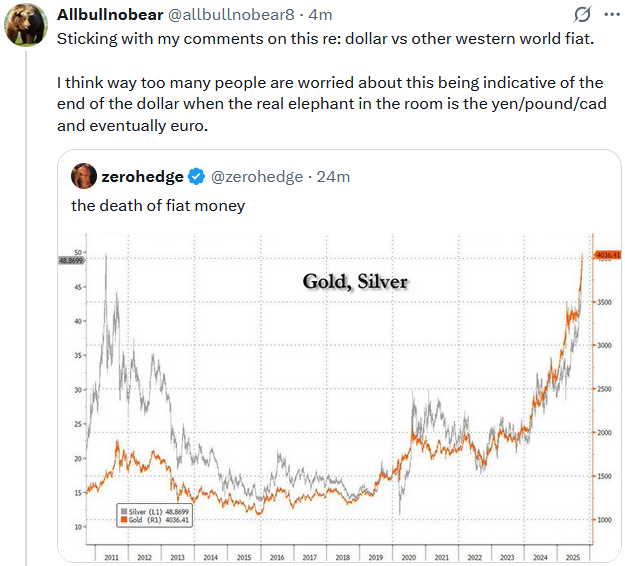Is this U.S.-China selloff a buy? A top Wall Street voice weighs in
The graph below, courtesy of the St. Louis Fed, charts the amount of money in the Fed’s overnight reverse repurchase agreement (ON RRP) facility. To understand why the current lack of a meaningful balance in the program could become concerning, let’s revisit the Fed’s response to the Pandemic.
During the pandemic and global economic shutdown, the Fed flooded the financial system with abundant liquidity. Accordingly, the Fed needed to absorb the excess liquidity; otherwise, its Fed Funds rate and other money market rates would have fallen well below zero percent.
The competitive investment rates on the ON RRP facility incentivized banks and government agencies (FHLB, FNMA, FMAC) to invest their excess liquidity in the Fed’s ON RRP. The facility provided a home for the excess liquidity and maintained overnight rates at the Fed’s target.
A further benefit to the ON RRP facility was that it gave investors a gauge of excess liquidity in the system. As the graph shows, the facility has dwindled to near zero. Said differently, after years of having a sizeable store of liquidity, the financial system now lacks excess liquidity. This doesn’t mean a liquidity crisis is imminent.
It simply means the financial system has returned to its pre-pandemic liquidity status. However, if liquidity demands increase, there is no liquidity in the proverbial bank as we have grown accustomed to. Thus, in the future, the Fed will likely be much quicker to act on a liquidity run today than it was when the ON RRP program had large balances.
Tweet of the Day

